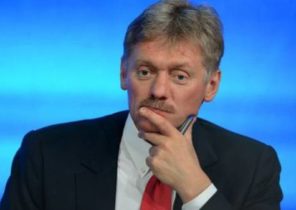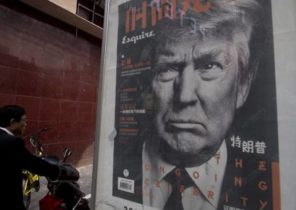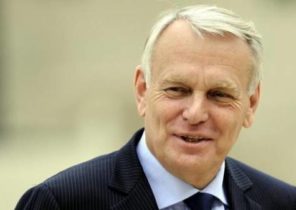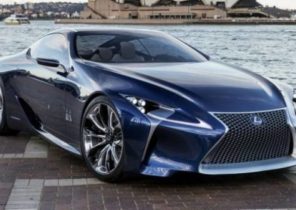
They have smaller sizes and greater precision: researched nuclear warheads can revolutionize the nuclear balance in the world
They are smaller, more accurate and more maneuverable, yet still able to provoke the Apocalypse. And just because of their manageability and the so-called ability to limit the consequences it is much easier to imagine the reality of their application. A new generation of nuclear weapons is preparing to enter the world stage. The gradual obsolescence of existing warheads, which is already a few decades, and a new military strategy based on increasingly complex and impenetrable defense systems, pushing major nuclear powers to the most comprehensive and radical update of the arsenals over the last half century. The United States, Russia, China, France and the United Kingdom (five countries that officially have nuclear weapons) has actually carried out the modernization of arsenals — from now until 2080. The objective is to ensure “reliable and safe” equipment. As for the countries that officially declares they have nuclear weapons — India, Pakistan, Israel and North Korea — and they also develop a new variety of “tactical” capacity, indicating the likelihood of its use on the territory of the fighting in the regions.
Try to Express this in other words. As soon as the UN begins in Vienna, the first talks on a new Treaty on the complete prohibition of nuclear weapons, States which possess them EN masse preparing to invest in a new generation of warheads, reminiscent of the darkest periods of the cold war and capable of their performance and supporting their doctrines to change the so-called balance of terror, which in itself is paradoxically making more acceptable the possibility of a nuclear war.
No one can claim innocence at the beginning of the so-called third nuclear age after the first “mutual assured destruction” and the second timid disarmament at the turn of the Millennium, neither the Russia of Vladimir Putin, attempting to compensate for economic downturn, maintaining the relative strategic equality with the United States; nor the America of Barack Obama, nor America, fell into the hands of Donald trump with his over-the-top testosterone ready in the next 30 years to invest an incredible amount of one billion dollars in an ambitious upgrading of its nuclear equipment. Not the innocent and China seeking to become a full-fledged superpower, and considers the United States a model for their technological development.
United States Of America
According to the Stockholm International peace research Institute (SIEPM), the United States, there were seven thousand nuclear warheads has already been installed on the missiles and stored in bunkers. After coming to power in 2009 with the promise of a world free from nuclear weapons, Barack Obama, in a result has launched a program of modernization, which the President, SHIPM Hans Christensen (Hans Kristensen) believes “absolutely contrary to the objective of reducing the role of nuclear component in the strategy of American security.” The administration of the tramp was not slow to take advantage of it. The program provides for the upgrade of the entire triad of weapons, ground, transported by air and scuba: replacement of 14 submarines of class “Ohio”, modernization of existing B-52 bombers and B-2 and develop a new bomber B-21 using stealth technologies, as well as the upgrading of Trident D-5 and Minuteman III. Staffed space of the system alert, the new command and control items. The main pride of this new Arsenal is the B61-12, it can be charged both conventional and nuclear warheads to a variable power and very high accuracy. It is against the B61-12, which, according to the Pentagon, will replace four different types of bombs, reducing their total number, was criticized, and the person from whom it was not expected. According to William Perry (William Perry), the Minister of defense in the Clinton administration, in this case we are talking about “costly but not necessary and especially destabilizing” arms — for the very reason that it is capable of carrying both nuclear and conventional warheads: “Subject to the attack of the enemy always tends to imagine the worst and able to respond with nuclear weapons to an attack carried out using conventional Arsenal.”
Russia
Having a total of 7290 warheads, again according to 2016, Moscow has the most extensive nuclear Arsenal in the world, if not the most modern. Putin confirmed the significant role of the nuclear component in the Russian military doctrine, diversifying its application and targeting the development of systems that can charge both nuclear and traditional warheads, depending on the need. According to Christensen, is “halfway to an extensive modernization, which will pose new challenges for the international community to control weapons.” In the center of the program — the new SS-27-2, or “YARS”, — Intercontinental missiles, up to four warheads “MIRV”, that is able individually to enter the atmosphere and strike at different targets. According to the United States, these systems violate the agreement SNV-III, signed by the US and Russia in Prague in 2010. Among other things, it prohibits the equipping of multiple warheads already existing types of solid-rockets. Russian can, however, reduce the number of warheads, theoretically respecting the agreements reached. Other weapons — under development: SS-30 “Sarmat”, “Children of Satan” in the language of NATO (SIC — approx. ed.) with ten warheads; the new generation of combat submarines, replacing the existing 11; modernization of Tu-160 and Tu-95MS.
China
Beijing, possessing, according to 2016, 250 nuclear warheads, are eager to expand your potential. Its global ambition, the desire to reach the level of the United States, at least, technology, the competition of neighboring India and Russia, the anxiety caused by an uncontrolled North Korean “ally” to push the Chinese leadership to large-scale investments in research and development of high-speed systems, i.e. missiles capable of hypersonic speed dive from space. China will replace its one-piece new generation of missiles with multiple warheads and solid-fuel engine. The volume of China’s budget spent for these purposes is unknown, but the scale of the programs seemed daunting.
France
New combat submarines, the heirs of class “Triumphan” should be taken into operation in the period between 2035 and 2048. Meanwhile, Paris is modernizing its Intercontinental missile M51 and ASMP medium-range transported air fighter Rafale. The latter will be replaced by 2040, as the aircraft carrier “Charles de Gaulle”. France will continue, however, to restrict to 300 (the current level) the number of nuclear warheads in its possession.
UK
A year ago, London had at its disposal 215 nuclear warheads. The British government announced the construction of four new nuclear submarines to replace the class “Vanguard” to resist “increase in the number of potential enemies and modernizing their forces.” Investments amount to € 46 billion. Boats will be deployed Trident missiles.
Geopolitical picture
The geopolitical picture is not promising. Strong acceleration of the nuclear program of North Korea makes the situation another element of instability. Moreover, if the administration trump refuses the agreement, forcing Iran ten years to refrain from creating a nuclear bomb, Tehran will no longer be any constraints to enforce this condition that may give rise to an unprecedented nuclear arms race in the middle East and, therefore, exacerbate existing instability. However, the reality of the prospects of the new race re-created first due to the tension prevailing due to the new aggressive policies of Putin that began with the crisis in Ukraine and annexation of Crimea, which confront not always have to dialogue NATO’s actions, too focused on the “Russian threat” on the Eastern front, more speculative than real. Even more alarming is the fact that any update on one side will be perceived as a signal to take the necessary actions of the other, and that other countries (even today, and not with nuclear weapons but with technical basis for its creation) from Germany to Japan and Saudi Arabia wants to equip its military Arsenal with nuclear weapons.







